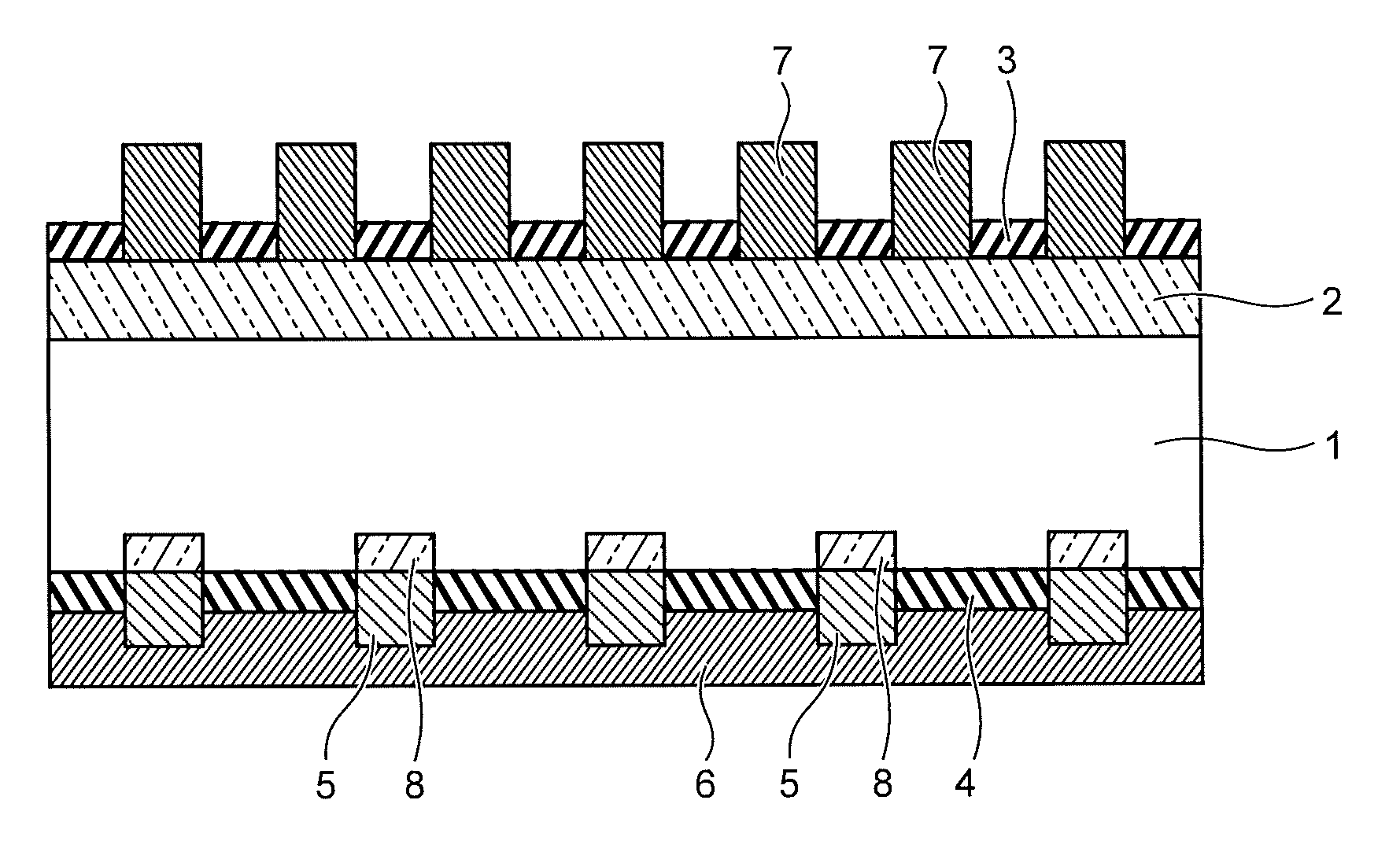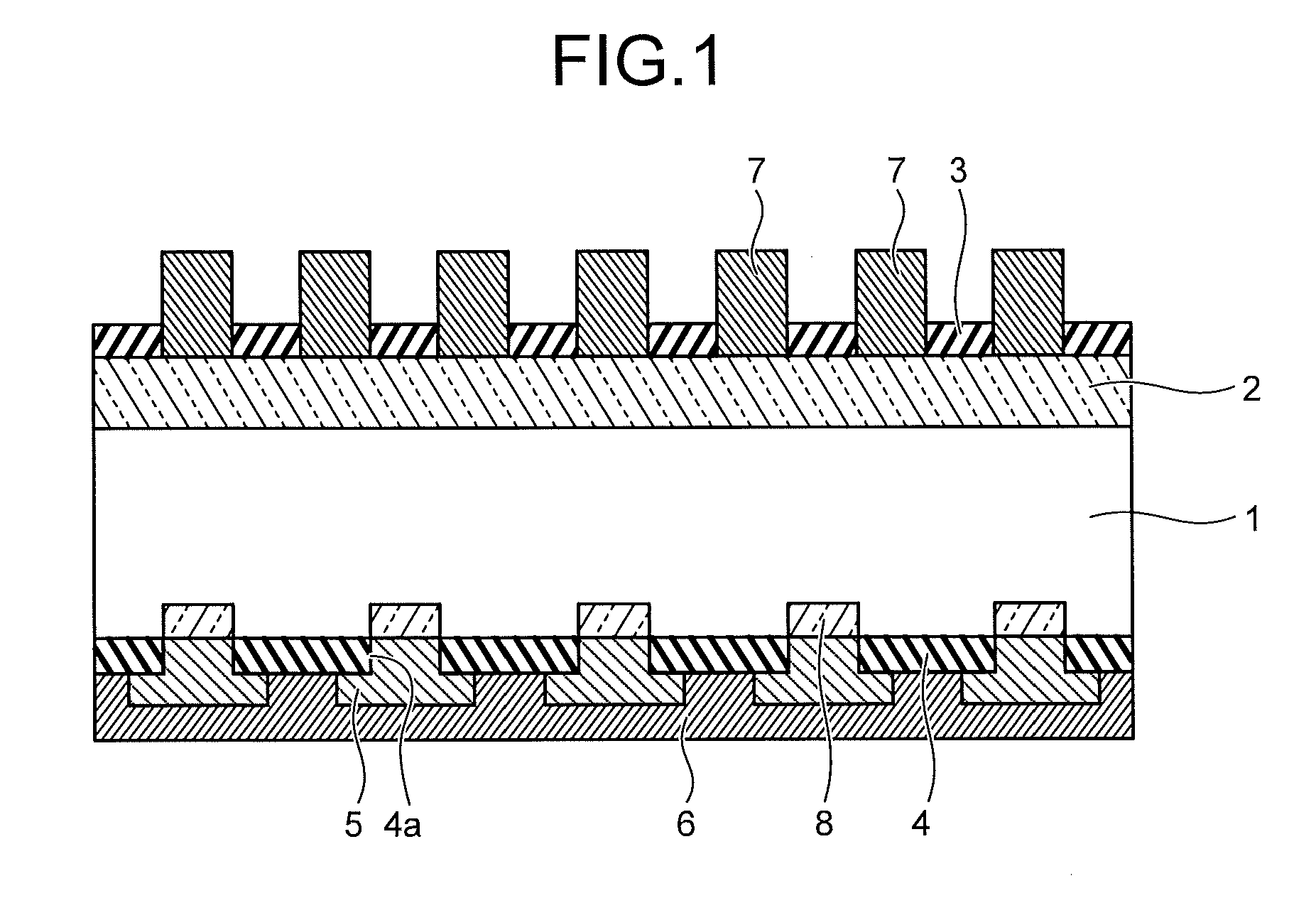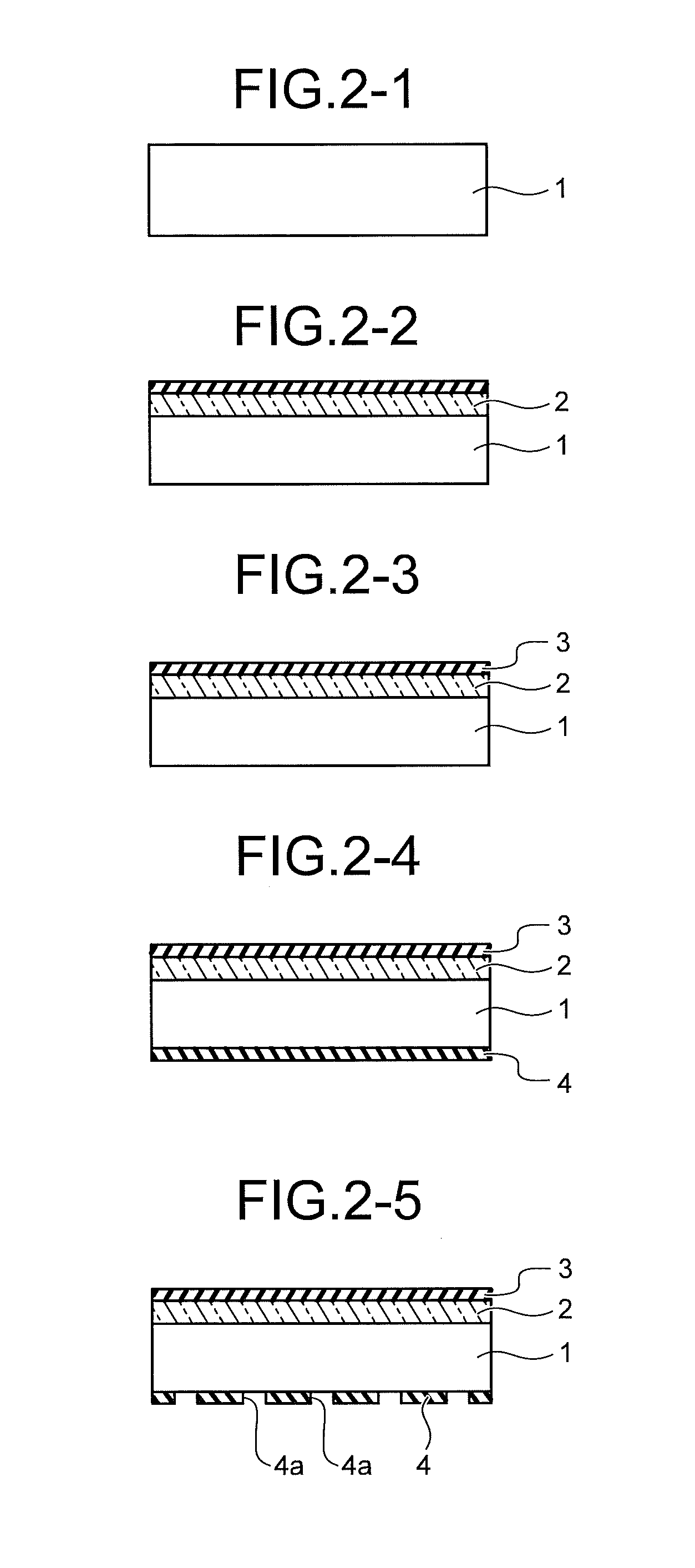Solar Cell and Manufacturing Method Thereof
a manufacturing method and solar cell technology, applied in the field of solar cells, can solve the problems of warpage of aluminum and silicon linear expansion coefficients, increase in manufacturing costs, so as to reduce manufacturing costs, reduce power energy consumption, and simplify the manufacturing process
- Summary
- Abstract
- Description
- Claims
- Application Information
AI Technical Summary
Benefits of technology
Problems solved by technology
Method used
Image
Examples
first embodiment
[0055]FIG. 1 is a section view explaining a structure of a solar cell according to a first embodiment of the present invention. In the solar cell according to the present embodiment, an impurity diffusion layer (n-type impurity diffusion layer) 2 is formed by phosphorus diffusion on the light receiving surface of a semiconductor substrate 1 of p-type silicon, and an antireflective film 3 is formed of a silicon nitride film.
[0056]For the semiconductor substrate 1, a p-type single-crystalline or polycrystalline silicon substrate may be used. The substrate, however, is not limited thereto, and an n-type silicon substrate may be adopted. Furthermore, a silicon oxide film may be adopted for the antireflective film 3. In addition, fine unevenness is formed as a texture structure in the surface of the semiconductor substrate 1 of the solar cell on the light receiving surface side. The fine unevenness is configured to increase the area for absorbing external light on the light receiving sur...
second embodiment
[0074]In the second embodiment, another solar cell and manufacturing method thereof in the present invention are explained in detail. FIG. 4 is a section view explaining a structure of the solar cell according to the second embodiment. Portions of the structure that are the same as the first embodiment are given the same numerals as in FIG. 1, and thereby the detailed explanation is omitted.
[0075]In the solar cell according to the present embodiment, the impurity diffusion layer (n-type impurity diffusion layer) 2 is formed by phosphorus diffusion on the light receiving surface of the p-type silicon semiconductor substrate 1, and also the antireflective film 3 of a silicon nitride film is formed thereon. Fine unevenness is formed as a texture structure in the light receiving surface of the semiconductor substrate 1 of the solar cell. The fine unevenness has a structure that increases the area of the light receiving surface that absorbs external light, suppresses the reflectance on t...
PUM
| Property | Measurement | Unit |
|---|---|---|
| thickness | aaaaa | aaaaa |
| temperature | aaaaa | aaaaa |
| temperature | aaaaa | aaaaa |
Abstract
Description
Claims
Application Information
 Login to View More
Login to View More - R&D
- Intellectual Property
- Life Sciences
- Materials
- Tech Scout
- Unparalleled Data Quality
- Higher Quality Content
- 60% Fewer Hallucinations
Browse by: Latest US Patents, China's latest patents, Technical Efficacy Thesaurus, Application Domain, Technology Topic, Popular Technical Reports.
© 2025 PatSnap. All rights reserved.Legal|Privacy policy|Modern Slavery Act Transparency Statement|Sitemap|About US| Contact US: help@patsnap.com



